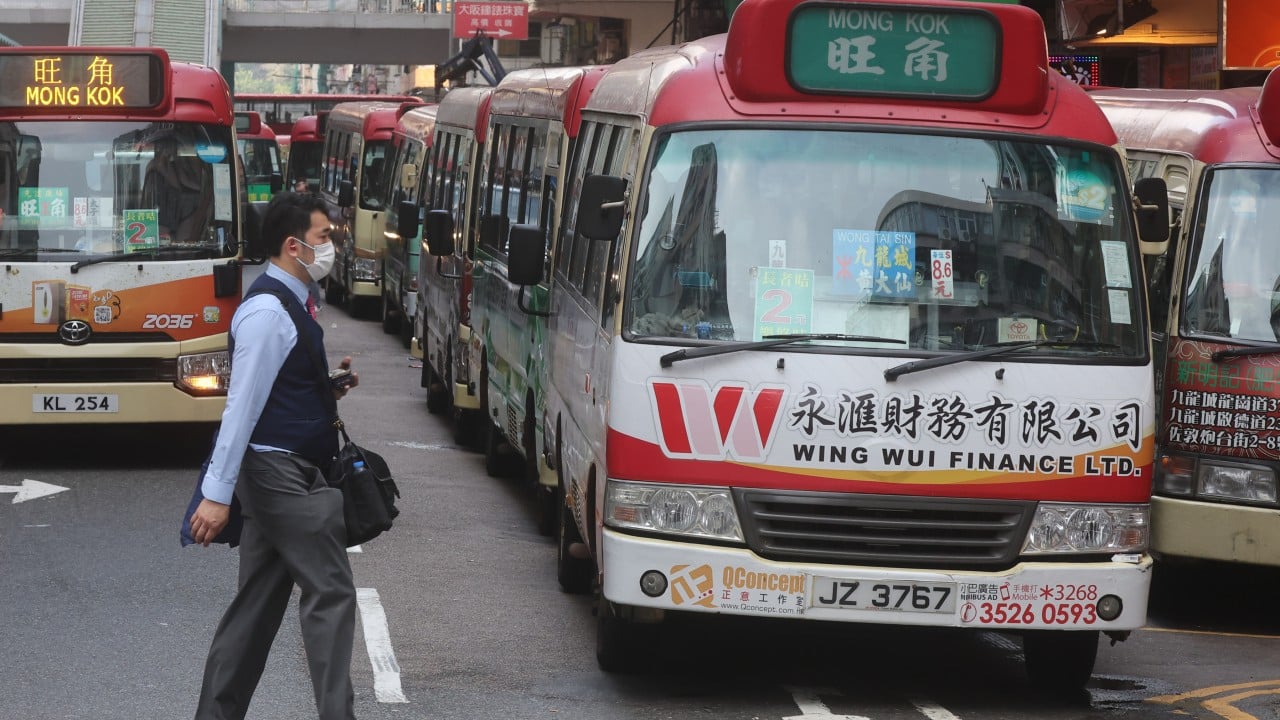Operators of Hong Kong’s privately owned minibuses running on more than 10 routes will be invited to join a regulated fleet by July in a plan the government has said will help ensure better service for the public.
The Transport Department said on Thursday it would start offering eligible drivers of red-top minibuses across 70 routes to convert to green-roof ones by the end of next month without needing to bid for the designated routes.
The red-top vehicles are free to choose how, when and where they operate, while green-roof ones are government-regulated and must adhere to specific routes and schedules. Drivers of the latter are company employees and earn a fixed salary.
The move aimed to align with the government’s “consistent policy” of bringing more of the privately owned operations into the fold of regulated service, the department said.
The transition has come into sharp focus after the pandemic, as many private operators found themselves unable to service debts and prompted some to leave the trade altogether.
Cheung Hon-wah, the chairman of the Public Light Bus Owner and Driver Association, revealed that 11 operators had been invited to take part in a trial switch, which included services between Mong Kok and the neighbourhoods of Hung Hom, Ho Man Tin and Aberdeen.
The department said currently 70 red minibus routes were also taking part in the government’s concession scheme, which allows residents over 60 years old to use public transport for a flat fee of HK$2 (26 US cents).
These operators had submitted information such as route details, fares and vehicle deployment to authorities and were managed similarly to green minibuses.
“These arrangements allow the Transport Department to obtain specific route information and provide conditions for further research to expedite the ‘Red to Green’ initiative,” the department added.
Red minibus routes that had been in service for more than five years, ran all day and were managed by a single operator would be considered for the transition scheme.
The city’s minibuses are known for affordable fares, speed and convenience.
The 4,350 vehicles carried more than 1.46 million passengers a day as of last year.
Cheung told a radio programme that reactions were mixed among private minibus drivers, who lamented a lack of flexibility in pricing and routing when subject to regulation.
“About half of red minibus drivers are not too enthusiastic about the scheme. Some of them operate one route in the morning and another in the evening, but if they turn into a green minibus, they can no longer do that,” he said.
But residents would have no problem accepting the change as they were familiar with the regular operations of green minibuses, the association head said.
Chau Kwok-keung, the chairman of the Taxi and Public Light Bus Association, said minibus drivers faced stiff competition from regular buses and railways, which received more support from the government.
He saw the transition scheme as a way to save the struggling industry after the financial ravages of the pandemic, with more than 100 minibuses towed away in February after owners failed to repay bank loans.
He said the phasing out of red minibuses was inevitable and supported operators making the switch.
“Of course as drivers, they would want to run their own business and earn more money,” he said.
“But as an association, we have to look at the big picture and encourage them to switch to driving green minibuses even if it means more regulation.”


